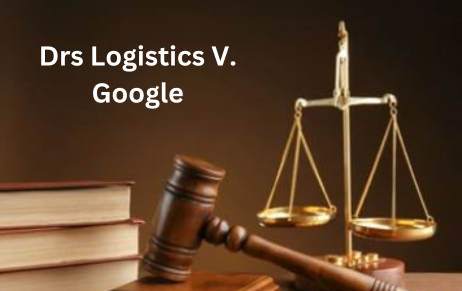INTRODUCTION Businesses seek to lure customers to the brand by using Google Ads word program,…
What’s in a domain name?
The original role of having a domain name was to provide an internet address for computers. With the increasing rate of commercial activities on the web, a domain name is now seen as a way of identifying the business of the company. A potential consumer is always lured to the company after he/she goes through their website. Hence, a company keeps it in mind to obtain such domain names which are easily identifiable and related to their established Trade Marks.
One of the raging crimes in recent years committed on the web is ‘cybersquatting’. Cybersquatting is defined as malpractice where individuals use a domain name reflecting the name of a prior existing company, intending to attain profit from the goodwill of a Trade Mark already belonging to someone else. Mostly, websites belonging to celebrities or huge companies are at risk. Cybersquatters earn profit in a way that they ride on the fame and reputation already acquired by the company. Additionally, they would ask for higher prices when they sell the domain to the original owner of the domain name. Some cybersquatters also resort to posting derogatory remarks about the personality or the company on their websites, which would only discourage prospective consumers.
Cybersquatting was captured precisely in Manish Vij v. Indra Chugh, AIR 2002 Del 243, where the Delhi High Court held that “an act of obtaining fraudulent registration with an intent to sell the domain name to the lawful owner of the name at a premium”.
The first cybersquatting case under the World Intellectual Property Organization (WIPO) was decided on January 14, 2000. In World Wrestling Federation Entertainment v. Michael Bosman, 1 N.C. J. L. & Tech. 3 (2000) the US-based World Wrestling Federation (WWF) filed a suit against a California resident who had registered the domain name ‘worldwrestlingfederation.com’ and offered to sell it to WWF at a huge dividend a few days later. The WWF alleged that the domain name in question was registered in bad faith by the registrant in violation of WWF’s Trade Mark. The WIPO held that the respondent’s domain name was identically and confusingly similar to the Trade Mark of WWF and ordered him to transfer it to WWF.
The first case in India with respect to cybersquatting was Yahoo Inc. v. Aakash Arora, 1999 IIAD Delhi 229 where the defendant initiated a website ‘YahooIndia.com which was nearly identical to the plaintiff’s renowned website ‘Yahoo!’ and also provided similar services. The Delhi High Court ruled in favor of the plaintiff and observed, “it was an effort to trade on the fame of Yahoo!’s Trade Mark. A domain name registrant does not obtain any legal right to use that particular domain name simply because he has registered the domain name, he could be still liable for Trade Mark infringement.”
In another instance, in Rediff Communication v. Cyberbooth & Anr. 2000 PTC 209, the defendant had registered a domain name ‘radiff.com’ which was similar to ‘rediff.com’. Holding the view that the value and the importance of a domain name are like a corporate asset of a company, the Bombay High Court decided the case in favor of the plaintiff.
Further, in Tata Sons Ltd. v. Monu Kastrui & others, 2001 PTC 432, the defendant had registered a number of domain names that bore the name ‘Tata’. The Court ruled in favor of the plaintiff and stated that domain names are not only addresses but Trade Marks of companies also, and they are equally important.
On May 15, 2009, in Google Inc. v. Herit Shah, Case No. D2009-0405), Google won a cybersquatting case against an Indian teenager who had registered ‘googblog.com’. The WIPO held that it was confusingly similar and ordered the respondent to transfer the rights of the domain to Google.
The dispute between technology and already existing Trade Mark rights resulted in several legal battles for huge companies like Bennett & Coleman, McDonald’s to name a few. There arose a need for new legislation to protect domain names and provide remedies against cybersquatters. This also led to the inception of the International Community for Assigned Names and Numbers (ICANN) and Uniform Domain-Name Dispute-Resolution Policy (UDRP) who authorized the process of determining disputes regarding domain names. Such authority was necessary since sometimes it is not even clear who is the owner of the infringing domain name or in instances where the cybersquatter is from another country.
The World Intellectual Property Organisation (WIPO) Arbitration and Mediation Center deal with domain name disputes under the new UDRP which is applicable to generic top-level domain names adopted by the ICANN on August 26, 1999. The WIPO Center’s Domain Name Dispute Resolution service specifically regulates domain name disputes with the e-filing facilities and a well-maintained case administration system.
On accord with the Indian case precedents mentioned above, we can see that there is a gaping hole in the arena of cyber laws to prevent cybersquatting. While resolving such disputes, Indian Courts have resorted to the principle of passing off on whether the goodwill of the complainant was endangered or not and whether the marks are confusingly similar.
The menace of cybersquatting has pushed legislatures globally to take serious note of it. The United States enacted the Anticybersquatting Consumer Protection Act (ACPA) to take control of this growing hazard. It is about time India too follows suit and comes up with its own legislation.
About the Author: Ms. Madhuri Iyer, Trade Mark Attorney at Khurana & Khurana and can be reached at [email protected]

